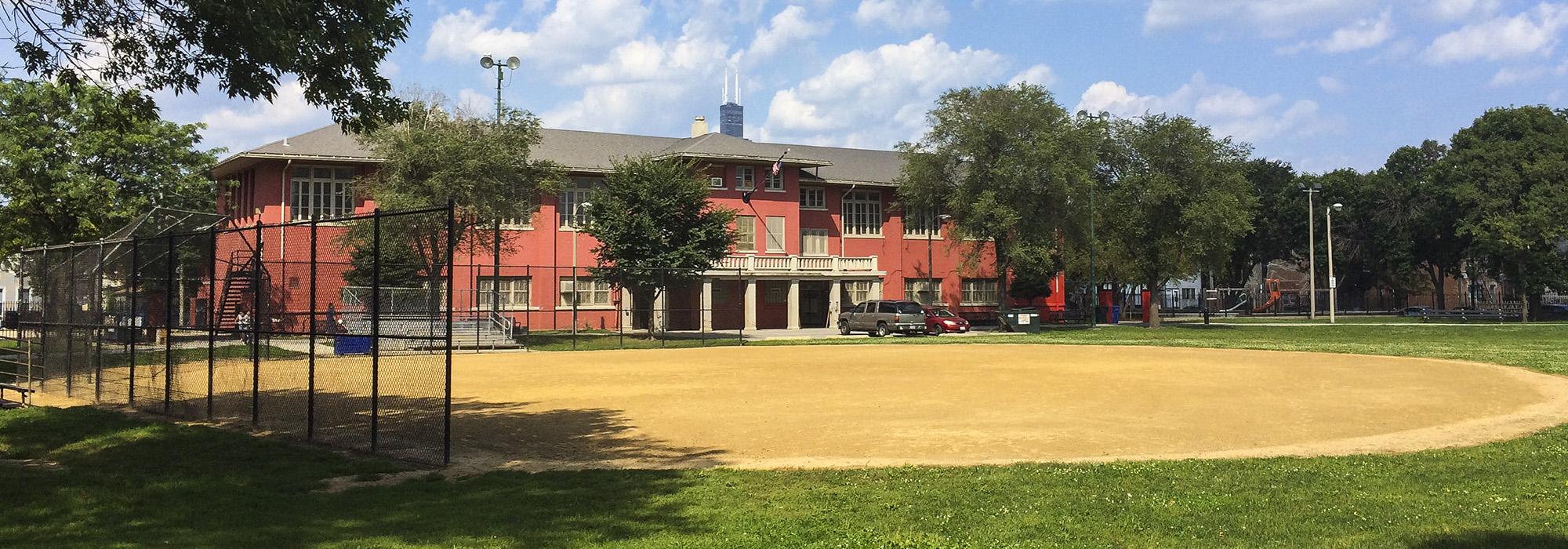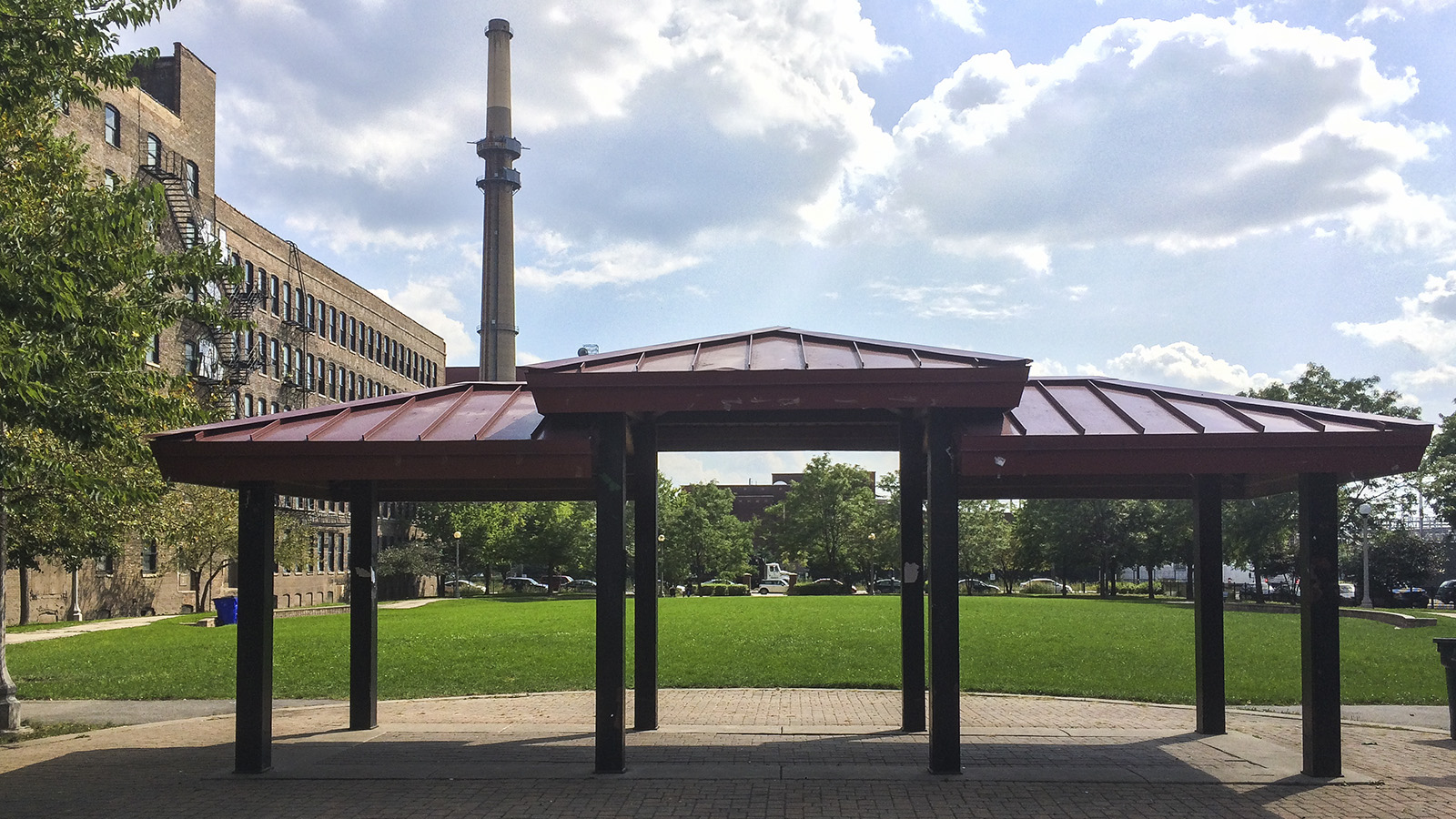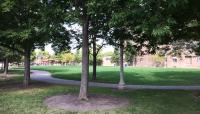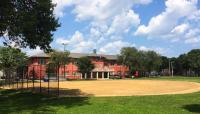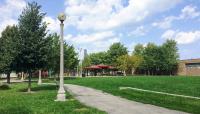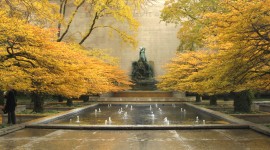Founded in 1907 by the city’s West Park Commission, Dvorak Park (along with Eckhart and Stanford Parks) was part of a progressive reform movement aimed at providing small, neighborhood parks to crowded working-class enclaves. Such parks provided much-needed services to impoverished neighborhoods, including bathing facilities, affordable hot meals, English lessons, vocational training, and venues for social events and recreation.
Sited in a densely-populated, primarily Czech neighborhood, Dvorak Park began as a 3.85-acre parcel and was named for Czech composer Anton Dvorak. The park’s design, developed by Jens Jensen, focused on active recreation spaces and facilities, including swimming and wading pools, an athletic field, a playground, outdoor gymnasiums (separated by gender), and a field house. Jensen also provided Dvorak Park with a children’s garden. The perimeter of the park is connected with a wide, curving asphalt path shaded by deciduous trees. The Prairie-style architecture of the field house and bathhouse, designed by William Carbys Zimmerman, are consistent with other Jensen parks in Chicago. Dvorak Park was enlarged in 1999 to accommodate new soccer fields, with a walkway to connect the old and new portions of the park. The new fields are in keeping with Jensen’s original intent to focus on active recreation; the park is one of Jensen’s few surviving reform era designs.



